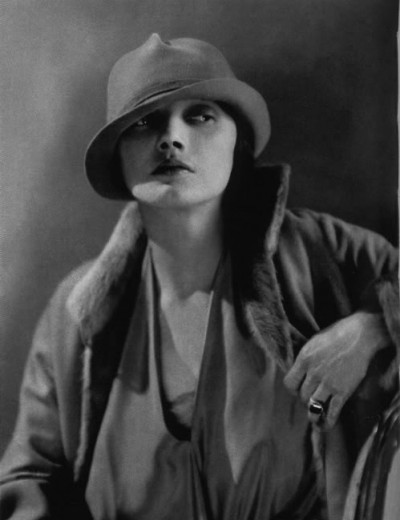
Augusta Bernard
About
the designers
Augusta Bernard was born in 1886 in Provence, France. She started her atelier in Biarritz, moving to Paris in 1922. She linked her first and last names together, to avoid confusion with other houses with similar names.
Throughout the 20's, she made slim, long, bias-cut evening dresses in pale, moonlit colours. Her clients, many of them Americans, liked her simple dresses which were an exquisite backdrop for their jewels.
Augusta Bernard enjoyed a successful career during the first half of the 1930s. By 1930 her reputation had been well established, when the Marquise de Paris, one of the best dressed women in France, won the Concours d'Elegance in St. Moritz, wearing a décolleté Augustabernard gown of molten silver lame. A neoclassical evening gown she designed in 1932 was chosen by Vogue as the most beautiful dress of that year. Her reputation rested on a dramatic and up-to-the-moment personal style.
She did not care if her salon at 3, rue du Faubourg St. Honore was furnished unfashionably or if her clients found her on her knees fitting the hemline of one of her "grand simple" gowns. During the 30's there was a great interest in classical Greek art, and this sculptural form and long floating line of Augustabernard's evening dresses was captured by photographer Man Ray in 1934.
However, as the depression of the 30's deepened, her clients ordered her clothes but many did not pay their bills. Although there was no reduction in business, she closed down and retired in 1934 presumably for financial reasons.
Furthermore Augusta Bernard belonged to that eminent band of couturiers between the two Wold Wars which included Channel, Vionnet, Schiaparelli. Louiseboulanger and the Callot Soeurs.
The Look
Like Vionnet, she was a technician with a mastery of the bias cut. By cutting the fabric of the dress on the cross-grain, she achieved a fluidity which gave the evening gown great elasticity and a refined, draping quality. Decoration was achieved by the material itself, scarves floating at the shoulder or hip, flounces, scalloped tiers, or tucks applied in a neck-to-hem spiral. She avoided elaborate embroidery used by other couturiers.